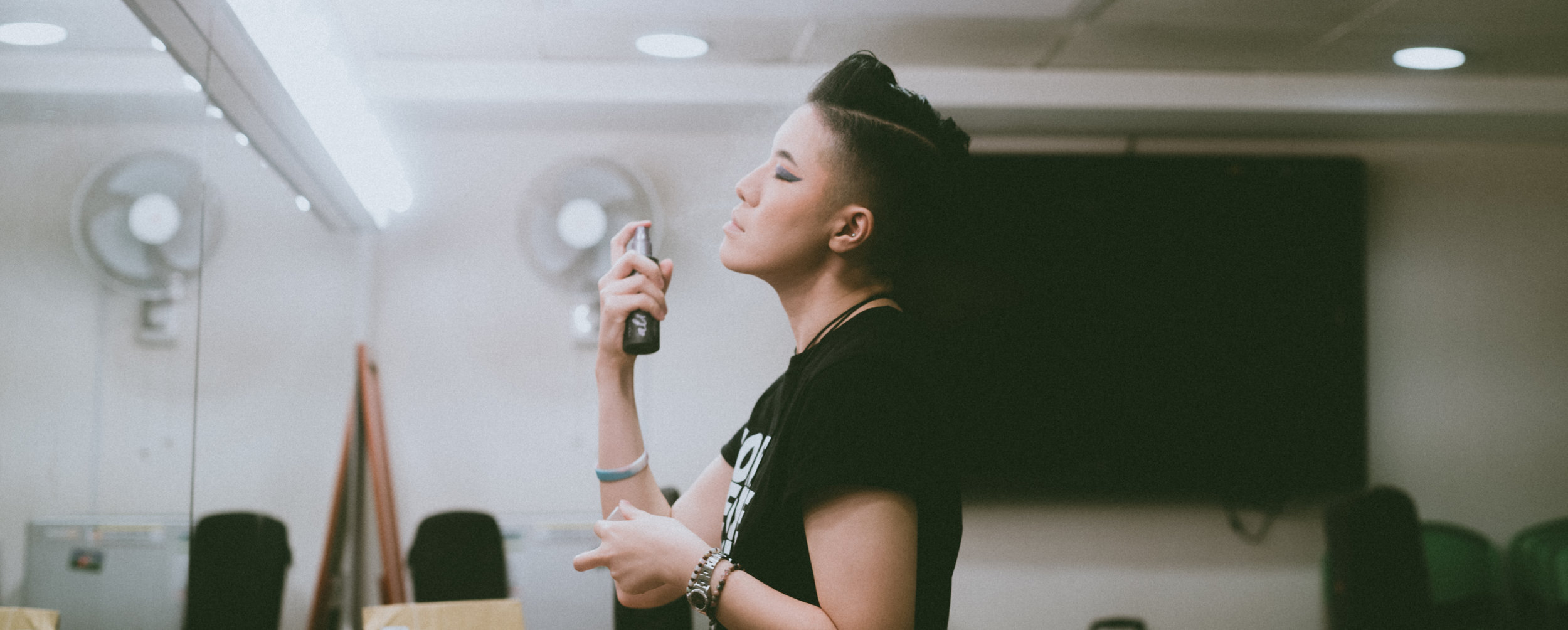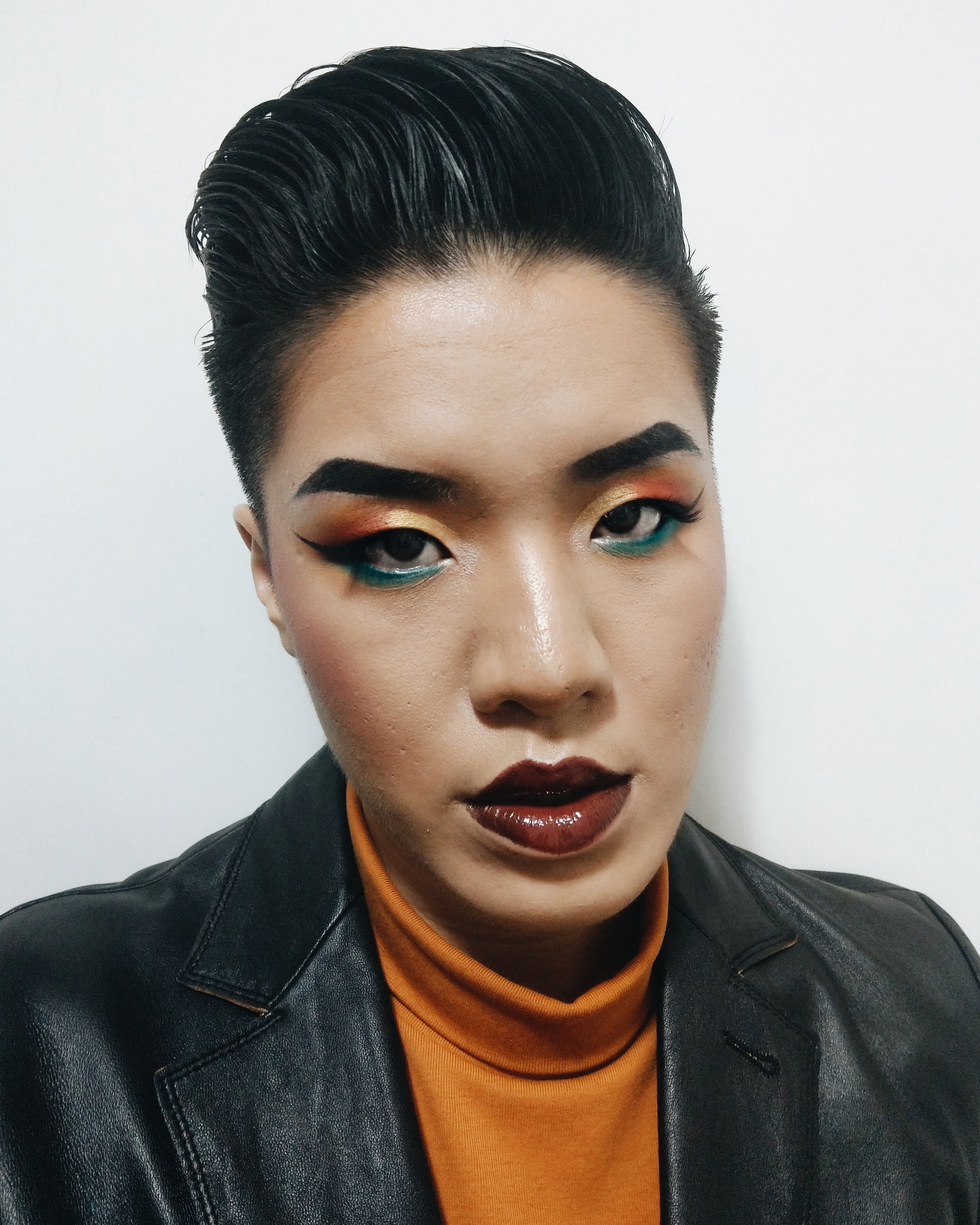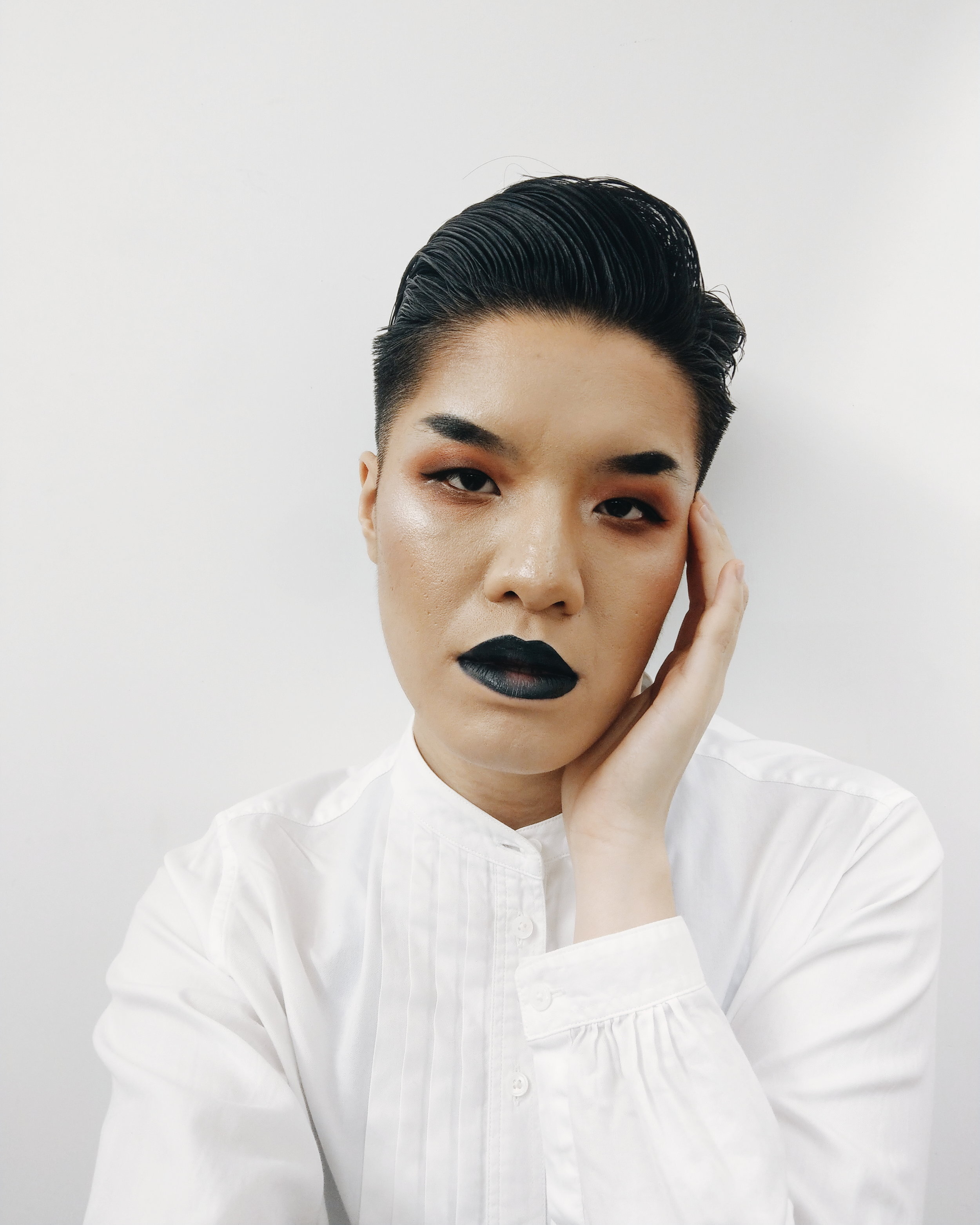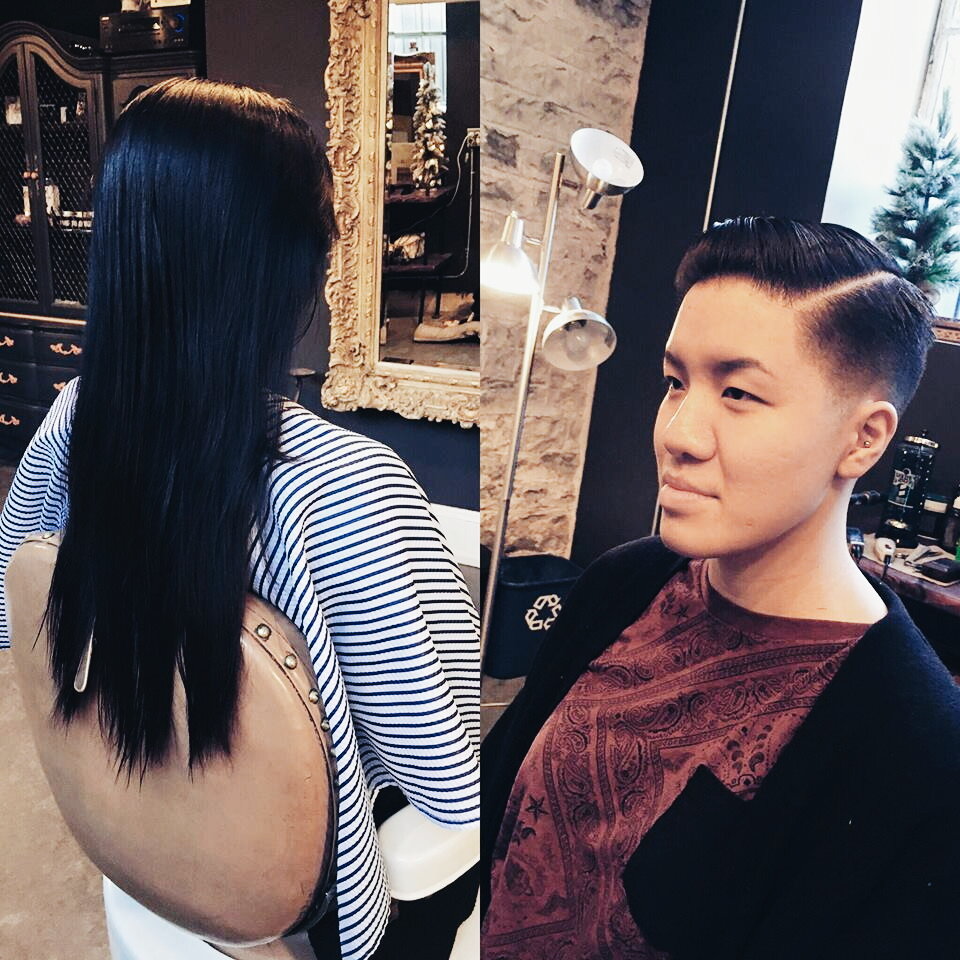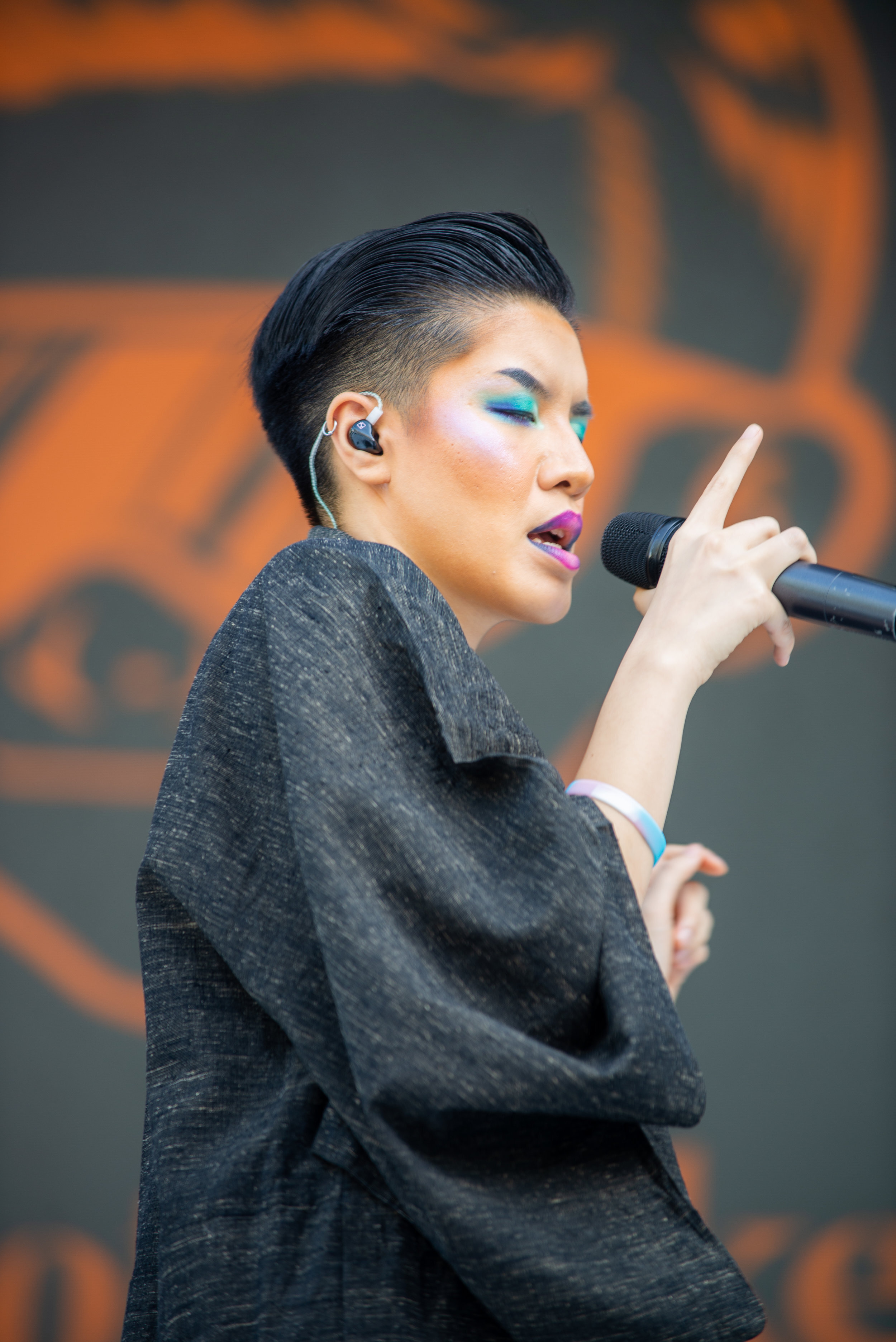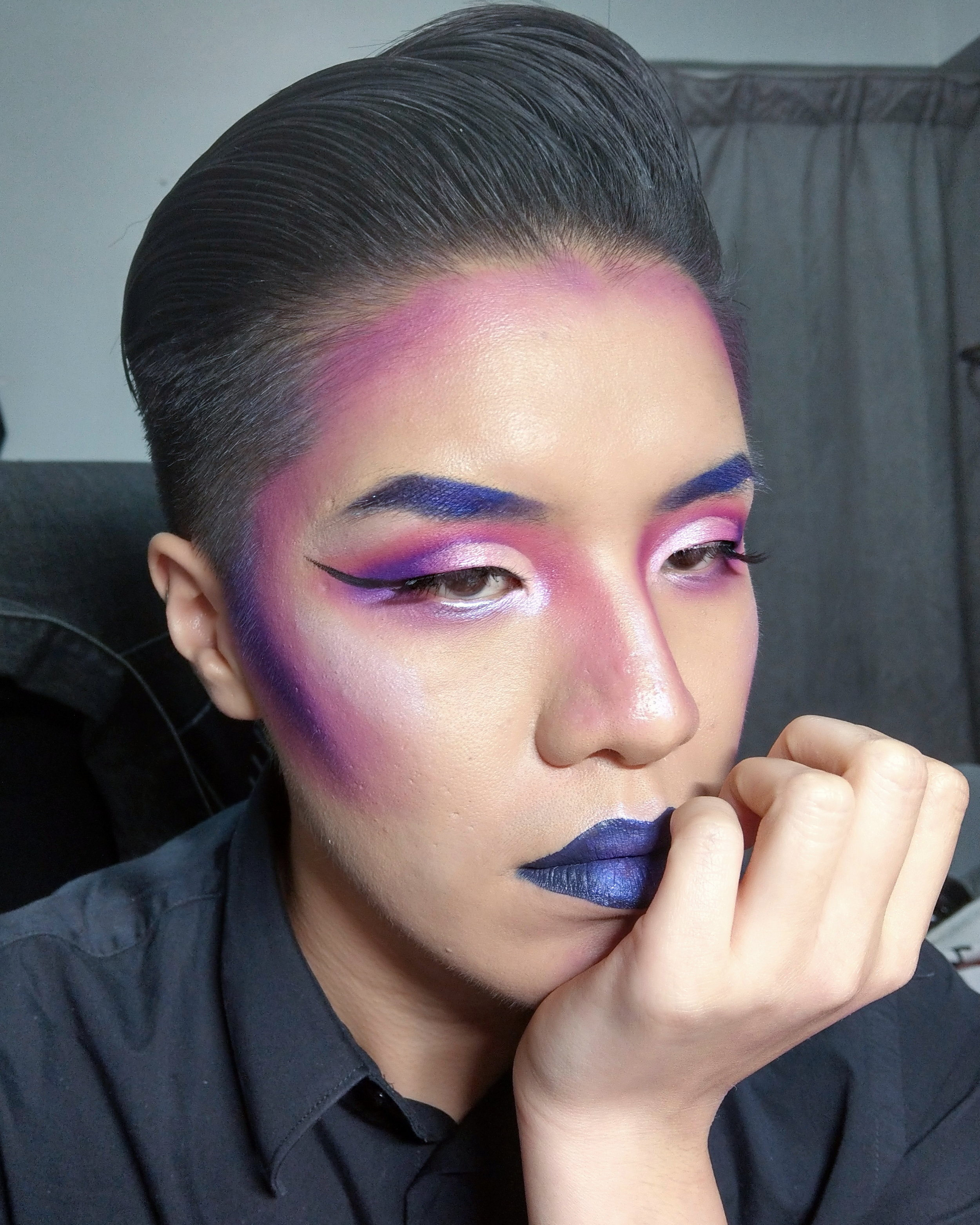Overcoming the Expectation that Make-up = Feminine
By guest writer Vincy Chan
I stumbled upon my junior graduation dinner photos when I cleaned my hard drive last week. I was 15 and that was the first time I had applied foundation. Imagine there’s a Casper live action reboot and James Charles is casted as Caspar, that’s what I looked like.
When your mother is a no-bullshit public hospital nurse who has almost always worn her hair short, and has only had her face done once in her life (on her wedding day), you had no makeup to mess with growing up and no one to learn it from. Came graduation dinner season, you let one of your “aunties” (who, naturally, isn’t related to you because you’re Chinese and all older female family friends are “aunties”) get you what was probably the darkest pressed powder from a Korean chain, but was still two shades too pale for you.
I’m happy to say today that I’m a proud owner of foundation that closely resembles my natural skin tone (thanks RiRi) a decade and a half later. Having makeup “feel right” on my skin has been a process. Not just the way I apply it, but also the way it makes me feel.
Getting around to questioning my own gender, and coming out to my friends on Facebook as “non-binary” took me less than 8 months. I was 24, and a college graduate. Later than most queer and trans narratives you see in the media. Shocking, I know. But not so much for someone who spent most of their life in a non-Anglophone, post-colonial city and didn’t have access to the information and sufficient vocabulary that describes transness growing up. Nothing beyond butt-of-the-joke “transsexual”1 caricatures they see in Cantonese TV series anyway.
I had grown my hair out in college and woke up half an hour early for class to put my makeup on as an attempt to reclaim loss time in high school. Loss time spent in an all-girls Anglican school as a slightly confused, short-haired-but-not-quite-”TB”2 teenager who didn’t spend her adolescence nurturing and exploring her femininity.
It might have been my thirst for words to describe who I am that drove me to very specific labels at the beginning. Not queer, not trans, not nonbinary, but demiboi and androgyne. In a world where “unisex” and “androgynous” are seen as synonymous with masculine, I felt the need to rid my wardrobe and myself of anything “feminine:” my skirts, dresses, makeup and my hair. I was ready to start anew with button downs, brogues, and pomade. To “be my true self” and to be “one of the boys.”
It was a bit of problem. I’m a singer. And the lesson from the performer’s 101 that when that spotlight hits you and you have no makeup on, your face will look like a shapeless, featureless blob of dough. When I got invited to play my first gig after moving back to Hong Kong from Minneapolis, I wasn’t about to go on stage barefaced so I frantically rebuilt a basic drugstore makeup collection.
I think I didn’t want to admit it at the time but I missed doing my makeup. It was a routine, a ritual if you will, before I go on stage. Time I can spend by and with myself to feel put together. I told myself it’s okay for me to wear makeup as a masc-of-center non-binary trans person because being a performer is the universal hall pass for “too much.” Clothes that are “too much.” Looks that are “too much.” Body language and movements that are “too much.” I took that liberty and went with it.
Medium coverage foundation to even out my skin tone and filling in my eyebrows became winged liner became smokey eyes became cut-creases became tadpole eyebrows, eyeshadow dragged out to my temples, contoured nose, overdrawn lips and false lashes. Sometimes I don’t blend after I bake so my cheekbones can look like Trixie Mattel’s. People stared at me on public transit more often as my looks started to venture outside of socially acceptable ways of using makeup as a tool to emphasize the kind of femininity that’s prized in East Asia: doe-eyed, rosy-cheeked, fair-skinned with soft curls dyed in one of the three specific shades of brown. I am none of the above. I have also never felt as powerful and anchored as I do now in all my excess.
Gender nonconformity and queerness have historically been the undercurrent of the entertainment industry. 2019’s Met Gala theme “camp” is only the more recent addition to an ever expanding list of evidences. The lauding of “too much” in performing arts gave me the leeway to harness and reconnect with the femininity that supposedly came as a package with the sex I was assigned at birth, that I felt like I had to let go of when I came out.
“Clothing/ makeup doesn’t have a gender.” I comprehend that intellectually. To overcome my own hangups about it is a hurdle. Over the past year, I had started slowly incorporating dresses and skirts back into my looks, gently so so I don’t disturb my dysphoria in its slumber. These were pieces I had kept when I made my trans-Pacific move, partly because they were expensive or had sentimental value, but also because I had had this nagging feeling that I would need them again someday. And I was right.
Wearing makeup again didn’t make me a better performer. But it did make me feel more at home, both on stage and in my own skin. I look up to Cantonese pop legends like Anita Mui striding in her white deep-v jumpsuit, her platinum pompadour crown always in place. Or Leslie Cheung’s delicate face veiled by his waist-length hair, or when he danced in red sequined Manolo Blahniks. They were unrelenting and unapologetic in their expressions through style and movement. Their representation might have been ambiguous, confusing even, but their choice to do so was deliberate. That deliberateness is something I aspire to.
Leslie Cheung
People call me “lengjai”3 from behind judging by my height and my slicked hair. They quickly apologise when I turn around, my face all done up. People still stare. And I let them.
Footnotes
1. ”Transsexual” and its Chinese translation are still prevalent in Hong Kong’s local vocabulary and official documents when referring to transgender people. The word “transgender” had only slowly gained more traction in the media and public discourse in the past decade or so.
2. (“TB” is short for Tomboy in Hong Kong queer slang. It’s usually the label assigned to masc-presenting or butch lesbians, but I would say that it is a distinct identity from butch or masc as we understand it in the Anglophone world.)
3. “Handsome man.” A colloquial salutation and term of endearment most commonly heard in restaurants and wet markets.
Vincy Chan is a nonbinary trans singer-songwriter, artist and SOGIESC advocate from Hong Kong. They write sometimes. You can follow Vincy @chanwanvincy on Instagram.
Qwear is volunteer-run and we rely on community contributions. Support us on Patreon.
Share this article
Qwear is an independent platform that empowers LGBTQIA+ individuals to explore their personal style as a pathway to greater self-confidence and self-expression.
We’re able to do this work thanks to support from our amazing community. If you love what we do, please consider joining us on Patreon!
Support Us on Patreon
